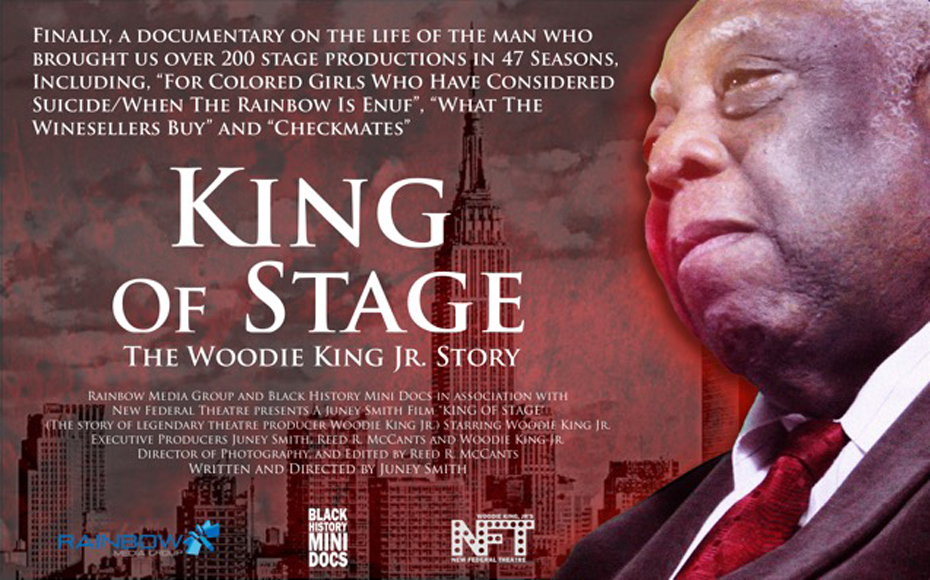
LOS ANGELES—The Feb. 8-19 Pan African Film Festival’s 26th annual extravaganza of Black-themed fiction, documentary, animated and short productions, workshops, panels and art expo was truly one of its best fetes. Once again, PAFF presented Angelenos and aficionados with the opportunity to see on the big screen at Cinemark Baldwin Hills Crenshaw Plaza movies that most film fans might otherwise not get a chance to watch. At the same time, filmmakers from around the world had the opportunity for their films to be shown in L.A., arguably the capital of world cinema.
In addition to what I’ve previously written, here’s a wrapup of the other works I saw at PAFF 2018:
King of Stage: The Woodie King Jr. Story. Actor/director Juney Smith’s 90-minute nonfiction biopic is a joyous celebration of the life, legacy and work of the titular theatre impresario/producer/director. Smith (who acted in movies such as Lethal Weapon 2 and Good Morning Vietnam) has creatively transformed what could have been a very straightforward talking-head documentary into an extremely imaginative, highly entertaining cinematic chronicle. The talented helmer did so by finding the visuals to accompany Woodie as he relates tales about growing up in Detroit and a life well spent on the stage.
King is a sort of African American who’s who of the stage, as Woodie’s path crossed that of many of theatre’s greats, from Denzel Washington to Alfre Woodard, Leslie Uggams, August Wilson and Amiri Baraka to that other Manhattan stage stalwart Joseph Papp and beyond. A veritable force of nature in the realm of African-American theatre, the doc shows Woodie’s role in bringing classics such as Ntozake Shange’s 1975 For Colored Girls Who Have Considered Suicide When the Rainbow Is Enuf to the boards, presenting productions from Off-Broadway to Broadway to national and international tours, including a fun sequence with James Brown performing in Liberia.
Smith was presumably limited in budget and resources: In a Q&A he took part in after a PAFF screening it was stated that he shot Woodie in the basement of his New York apartment and cut the film using a computer and an editing program there. What Smith has no limit of is art’s most crucial criterion—imagination—as he discovers graphic imagery and sound that enable him to visualize and express the content of Woodie’s saga as a sage of the stage. Smith also possesses another essential ingredient—a great love for his subject matter that is tenderly transmitted in every frame.
Still going strong and producing plays at 80, the successful Woodie comes across as the opposite of the stereotypical “tortured artiste,” starving in his garret: He is as affable as he is eloquent, with a strong inner resilience and determination. King was one of PAFF’s special “Spotlight Screenings” with a second viewing on the festival’s last day. Together with Captain Thomas Sankara, about the great Burkina Faso revolutionary, King of Stage: The Woodie King Jr. Story were my two favorite films at 2018’s PAFF. The trailer can be viewed here. It tied for the PAFF Directors’ Award—Feature Documentary.
The Rape of Recy Taylor. This is another nonfiction biopic about real-life noteworthy African Americans. In 1944 Ms. Taylor, a married mother, was kidnapped by gun-toting white teenagers and gang-raped in Alabama. Nancy Buirski’s 91-minute documentary chronicles this historic injustice, which Oprah recently mentioned during her stirring awards ceremony speech. Like those spearheading today’s #MeToo, Time’s Up and Rose’s Army anti-sexual harassment/assault movement, much to her credit Ms. Taylor spoke out. Among her early defenders were Rosa Parks (long before she sparked the momentous Montgomery bus boycott), and the forerunner of this newspaper.
The rapists were never convicted. A decade later Emmett Till paid with his life for merely (allegedly) whistling at a white woman. The court case in Harper Lee’s classic novel To Kill a Mockingbird concerns a Black man falsely accused of raping a white woman, which triggers a near-lynching and does not end well. So much for “justice” under American apartheid, which meant: “just-us” rednecks.
It’s great that Buirski, who directed 2011’s documentary The Loving Story, about a groundbreaking court case opposing anti-miscegenation laws, and also produced the 2016 feature film version of these events is shining a light on Recy Taylor. Buirski cleverly uses clips from early “race films” by directors such as Oscar Micheaux in Rape, as well as archival footage, news clips and original interviews.
Unfortunately, for about ten minutes, Buirski fails to find other corresponding visuals to graphically convey her theme and narrative. The film repeatedly shows scenes of the woods where Ms. Taylor was repeatedly raped and assaulted. These pointless shots are repetitive and boring. Reenactments in the Errol Morris Wormwood and I, Tanya mold, or animation, for instance, could have served the picture’s purpose better, or even just shortening it. One might argue this is a matter of budget, but I suspect it is more likely a failure of filmic imagination.
In extolling the virtues of and emphasizing the special oppression of African-American women under slavery and Jim Crow, Buirski appears to slight the misery of Black males under the same unjust systems. Perhaps the flip side of the raping of Black women by racists was the castrating of Black men. Anyway, most victims of lynching were African-American men. Like me, Buirski does not appear to be Black, and I think that Black males have endured and suffered enough from police brutality, etc., without needing to be relegated to “second class status” in the ranking of victimization. The best comment I ever heard about the “who-is-more-oppressed-than-others-competition” came from actor/activist Marlon Brando who said: “It’s not an ouch contest.”
Nevertheless, despite these flaws in form and content, the subject matter of The Rape of Recy Taylor is extremely important and timely, especially given today’s resistance to sexual exploitation.
Black Lightning. PAFF presented a number of “Talk4Reel” events, including this screening of clips from the TV series about an African American superhero, followed by a panel with four of Black Lightning’s screenwriters. The CW network program is entertaining, and it was interesting to see how it juggled comic book conventions, topical social justice issues (such as removing Confederate monuments), with a family drama. With all the buzz sweeping society about Black Panther, which screened at PAFF as a gala, this showing and discussion were timely and informative.
Malcolm X: An Overwhelming Influence on the Black Power Movement. Thomas Muhammad’s 92-minute documentary about Malcolm X is an enjoyable, informative film. A straightforward biopic, it consists largely of archival footage and original interviews with one of Malcolm’s daughters and contemporary civil rights leaders, as Malcolm’s place in the cause is explored. This is an excellent primer on the prophetic voice of militant resistance to oppression and on internationalizing the liberation movement.
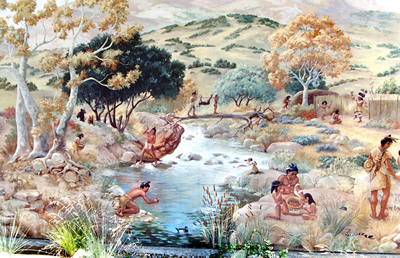
Pacoima Stories: Land of Dreams. Crystal Jackson’s loving look at her hometown, a Black and immigrant community in L.A.’s San Fernando Valley, is a straightforward documentary using archival footage, original interviews, etc., to tell this neighborhood’s rich story. The 111-minute doc stretches back to Native times in 450 CE up until today and covers many of the notables who emerged from that multicultural place, such as “La Bamba” singer Ritchie Valens. The problem is, Jackson is so enamored by her subject that she doesn’t know when to quit and jams too much into this seemingly never ending chronicle. This may also have to do with pleasing funders, but I am just guessing. Jackson’s frequent mispronunciations as the doc’s narrator are also distracting. Having said that, the theater was packed at the screening I attended, probably filled with a highly appreciative hometown crowd. See the trailer here.
Found in a Dream. Helen Kassa’s feature film debut is a mixed bag. On the one hand it is amateurishly made: For example, the sound often picks up and amplifies every rustle in the characters’ clothing. Also, if I never see another production about violent Black gangstas and drug dealers I’ll be all the happier for it. But despite its clichés, unprofessionalism and druggy tropes, Found in a Dream has the virtue of portraying Ethiopian exiles living in Australia and is shot in Melbourne and Ethiopia. Although the reasons why the characters were forced to leave their African homeland are never fully addressed, at least Kassa is making a step forward in the screen image of these people by portraying them in the movies. You’ve got to start somewhere.
The Chi. This Showtime series also deals with hoods in the ’hood. Although there has been a steady procession of Black gangstas running amok with guns from the TV news to Blaxploitation movies to FX’s great Snowfall series about the CIA and the crack epidemic (Gary Webb was right!), The Chi is admittedly a well made drama, and the audience at the “Talk4Reel” screening seemed to love it. Viewers appeared to feel that the highly entertaining show was a realistic presentation of the realities of contemporary urban African Americans.
The third edition of “The Hawaii Movie and Television Book” co-authored by L.A.-based film historian/reviewer Ed Rampell drops in March 2018.



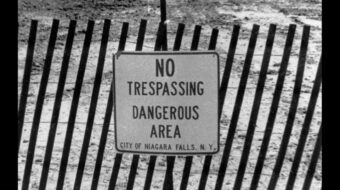
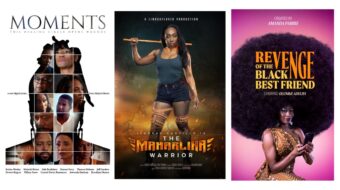
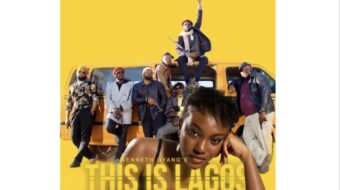






Comments